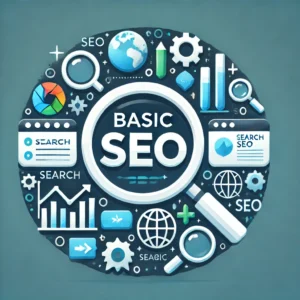Introduction
How to Create Compelling Content that Converts: A Complete Guide. Creating content that converts is about more than just good writing; it’s about understanding your audience, delivering value, and strategically guiding them toward taking action. In today’s competitive digital landscape, simply having well-written content isn’t enough—it needs to be optimized to drive results. Whether you’re trying to build a subscriber list, generate sales, or increase engagement, this guide will walk you through the essential steps for crafting content that truly converts.
1. Understand Your Audience
Knowing who you’re speaking to is the foundation of creating effective content. When you understand your audience’s needs, challenges, and desires, you can tailor your message to resonate with them.
- Define Your Target Persona: Create a detailed profile of your ideal reader or customer, including their age, interests, pain points, and buying behavior.
- Identify Pain Points and Goals: Understand what keeps them up at night and what solutions they’re seeking. Craft your content around these pain points to show how your offering can help.
- Speak Their Language: Use language, tone, and examples that align with your audience. If you’re speaking to a younger, tech-savvy audience, a casual and humorous tone might be effective, while a professional tone might work better for a B2B audience.
2. Create Strong, Attention-Grabbing Headlines
Headlines are often the first (and sometimes only) thing readers see. A compelling headline can determine whether someone clicks on your content or moves on.
- Use Numbers and Power Words: Phrases like “Proven,” “Ultimate,” and “Step-by-Step” are attention-grabbing. Numbers also attract readers; for example, “10 Proven Ways to Increase Your Sales.”
- Make a Promise: Clearly communicate the benefit or value readers will gain. For instance, “How to Double Your Sales in 30 Days.”
- Keep it Concise and Specific: A concise headline that quickly conveys the article’s purpose and value tends to perform better. Aim for 10-12 words to keep it impactful and clear.
3. Craft an Engaging Introduction
The introduction sets the tone for your content and is where you hook the reader. Start with an intriguing question, a surprising fact, or a relatable story to draw readers in.
- Address the Problem: Show readers that you understand their needs and why they’re here. For instance, “Are you struggling to turn readers into loyal customers?”
- Build Curiosity: Encourage them to keep reading by hinting at the valuable insights they’ll gain.
- Set Clear Expectations: Briefly outline what readers will learn and how it will benefit them. This clarity reassures them that their time will be well-spent.
4. Provide Real Value with Actionable Tips
High-quality, actionable content is what drives conversions. Offer specific, detailed advice that readers can immediately apply.
- Break Down Complex Ideas: Use step-by-step instructions, examples, or case studies to clarify complex concepts.
- Offer Practical Tips: Avoid vague advice. Instead, provide concrete steps, tools, or resources that can help readers achieve their goals. For instance, rather than saying “optimize your headlines,” provide tools like CoSchedule’s Headline Analyzer.
- Show Examples or Case Studies: Real-life examples demonstrate the effectiveness of your tips and help readers visualize how they can implement the advice.
5. Incorporate a Strong Call-to-Action (CTA)
If you want your readers to take action, you have to ask them to do so. A well-crafted CTA guides readers toward the next step in their journey.
- Place CTAs Strategically: Include CTAs at the beginning, middle, and end of your content to reach readers at various stages of engagement.
- Use Action-Oriented Language: Phrases like “Download Now,” “Get Started,” or “Learn More” make the CTA more compelling and give clear direction.
- Highlight the Benefit: Emphasize what readers will gain by taking action. For example, “Subscribe to receive exclusive tips on increasing your conversions.”
6. Build Trust with Credibility and Social Proof
When readers trust you, they’re more likely to act on your recommendations. Include elements that reinforce your credibility and expertise.
- Cite Reliable Sources: Link to reputable studies, industry data, or expert opinions to support your claims.
- Share Testimonials and Case Studies: Showing real-world success stories builds confidence in your advice. Include testimonials from past clients or highlight relevant case studies.
- Showcase Your Experience: If you’re an expert in the field, share your background or accomplishments to establish authority.
7. Use Visuals to Enhance Understanding and Engagement
Visual elements help make your content more engaging and can clarify key points, especially for complex topics.
- Add Relevant Images or Infographics: Visuals like charts, infographics, and screenshots can help illustrate important ideas and break up text.
- Use Videos for Deeper Engagement: Video content is highly engaging and can add value, such as a tutorial video or a customer testimonial.
- Optimize Visuals for SEO: Use descriptive filenames, alt text, and captions to make images and videos SEO-friendly, enhancing your content’s visibility in search results.
8. Optimize for Readability and SEO
Content that’s easy to read and optimized for search engines is more likely to attract and retain readers, ultimately improving conversions.
- Use Short Paragraphs and Sentences: Break up long sections of text to make the article easier to read, especially on mobile devices.
- Incorporate Keywords Naturally: Identify relevant keywords and include them naturally in headings, subheadings, and throughout the content. Avoid overstuffing, as this can harm SEO.
- Add Internal and External Links: Link to relevant articles on your own site (internal links) and reputable sources (external links) to boost SEO and provide additional value to readers.
9. Leverage Emotional Appeal
Emotion is a powerful motivator in decision-making. Use language that resonates emotionally with readers and creates a connection.
- Address Reader Pain Points: Identify their challenges and frustrations, then show how your content offers a solution.
- Use Positive and Inspiring Language: Encourage readers by using motivating phrases and demonstrating that achieving their goals is possible.
- Appeal to Aspirations: People are often driven by goals or ambitions. Frame your content to show how readers can improve their lives, careers, or businesses by following your advice.
10. Test, Analyze, and Refine Your Content
Content that converts is often the result of ongoing testing and optimization. Use analytics and feedback to improve your approach over time.
- Analyze User Behavior: Tools like Google Analytics can show which sections of your content perform best, where readers drop off, and how much time they spend on the page.
- A/B Test Headlines and CTAs: Experiment with different versions of your headlines, CTAs, or even content length to see which performs better.
- Gather Reader Feedback: Ask for feedback from your readers to learn which areas they found valuable and which could be improved. This input is invaluable for refining future content.
Conclusion
Creating compelling content that converts requires more than good writing—it’s about understanding your audience, adding value, and strategically guiding readers toward action. By applying these tips, you’ll be on your way to producing content that not only captivates your audience but also drives real results. Start implementing these strategies today and watch as your content gains traction, builds trust, and inspires your readers to act.






